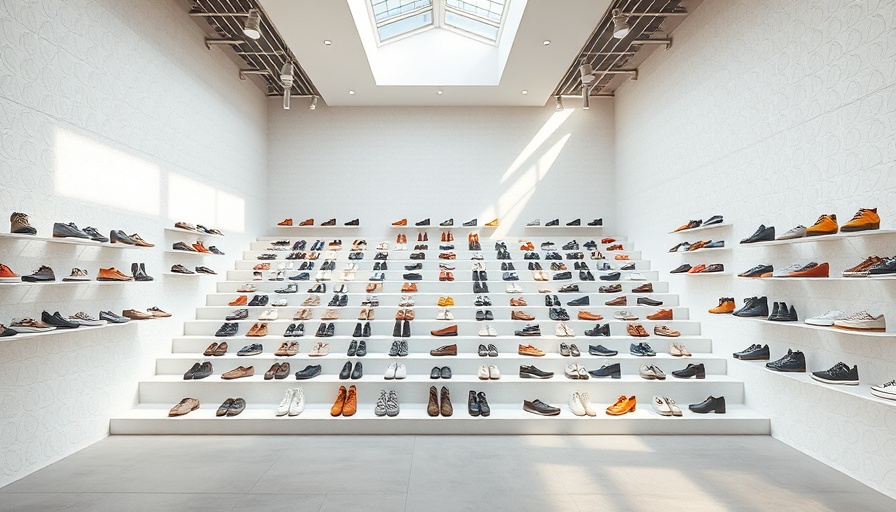
Minimalist Design Meets Sustainability at Veja’s New Williamsburg Store
Located in the vibrant neighborhood of Williamsburg, Brooklyn, Veja's latest store represents far more than just a retail space; it reflects a commitment to sustainability and minimalist aesthetics. Designed by local studio Office JDY, this store welcomes digital nomads and eco-conscious consumers alike, inviting them into a world where every element has purpose.
Honoring Originality: A Play of Textures
Office JDY has skillfully preserved much of the building's original charm, featuring exposed red bricks, concrete blocks, and plaster throughout the open sales area. This decision not only showcases the integrity of the structure but also serves as a reminder of the material's history and durability. The rough-hewn walls and surfaces interact beautifully with minimal white shelves, creating a balanced visual feast for the eyes. The contrasting industrial textures create a serene environment, ideal for holding conversations or for remote workers needing a break from their home offices.
Craftsmanship at Its Finest: The Role of Local Artisans
Collaboration with local artisans has enabled the incorporation of a unique lime plaster mix, enhancing the visual language of the space. This authentic touch fosters community ties while emphasizing Veja’s commitment to sustainability. Such a combination of local craftsmanship promotes the idea that sustainable practices are achievable not just in material, but in community engagement as well.
A Courtyard for Connection: Transforming Outdoor Spaces
In an era where outdoor spaces have become extensions of our living areas, the newly renovated courtyard invites visitors to stay longer. Wrapped in red-hued wood panels and adorned with charming globe-shaped lights, the courtyard creates an inviting atmosphere for both shopping and socializing. It offers an ideal setting for outdoor events and gatherings, aligning with the lifestyle of digital nomads who seek to blend work and leisure. With retractable shades in place, this space is perfect for hosting workshops, meet-ups, or casual co-working sessions.
Functionality Meets Aesthetic: Efficient Design Choices
For remote workers, comfort and functionality are critical. Comfortable white oak benches designed for trying on shoes not only create a welcoming experience but also encourage users to linger. This design choice reflects a broader understanding of ergonomics, catering to customers who value both style and comfort. Moreover, the presence of a shoe repair shop in the back reminds visitors of the importance of sustainable consumption—promoting the idea that maintaining and repairing is as crucial as purchasing.
The Bigger Picture: Veja's Growth and Cultural Impact
Founded in 2004 in Paris, Veja has made significant strides in the fashion industry, prioritizing ethical production. This Williamsburg store, its first dedicated retail space, signals a dedicated effort to connect with the local community while promoting environmental consciousness. As this trend in fashion progresses, consumers gravitate towards brands that align with their values—values that today’s digital nomads hold dear.
Why This Store Matters to Digital Nomads
For digital nomads traveling through Brooklyn or those seeking remote workspaces, the Veja store encapsulates an ideal fusion of tranquil aesthetics and functional design. By offering areas conducive to both shopping and respite, it encourages individuals to embrace a lifestyle where work can intermingle seamlessly with leisure. As such spaces become increasingly vital, Veja stands as a beacon for a future where sustainability and comfort are within reach.
The thoughtful design, local craftsmanship, and commitment to sustainability not only enrich the shopping experience but also create a refuge for those navigating the balance of remote work and life’s pleasures. For the eco-conscious consumer or the digital nomad in search of an inspiring workspace, Veja’s Williamsburg location holds the promise of a fulfilling experience.
 Add Row
Add Row  Add
Add 




Write A Comment